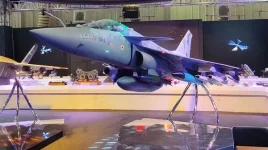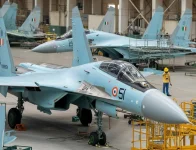- Views: 3K
- Replies: 4
State-owned aerospace company Hindustan Aeronautics Limited (HAL) is optimistic about receiving approval from the Cabinet Committee on Security (CCS) later this year for its significant Indian Multi-Role Helicopter (IMRH) project.
The CCS, India's top body for security decisions, needs to greenlight the funding required for developing this new 13-tonne class helicopter.
The IMRH is designed to be a modern replacement for the long-serving Mi-17 helicopters used by India's Army, Air Force, and Navy, with the handover expected to begin around 2032.
The IMRH is planned as a versatile, twin-engine aircraft capable of performing various essential tasks.
These include transporting troops, evacuating casualties, carrying supplies, and conducting combat search and rescue operations. Its primary role will be to take over from the Soviet-era Mi-17 fleet, of which approximately 240 are currently operated across the three branches of the Indian Armed Forces.
Many of these older Mi-17 helicopters are nearing the end of their operational lifespan and are due for retirement in the early 2030s.
Securing CCS approval is a vital step for HAL to move the IMRH from the design phase into full-scale development, a process estimated to cost between ₹10,000 crore and ₹12,000 crore over the next seven to eight years.
The helicopter is being developed to meet the varied requirements of all three services. The Indian Army and Air Force are expected to be the largest customers.
The Army, which heavily depends on helicopters for operations in high-altitude areas like Ladakh and Arunachal Pradesh, might require as many as 150 IMRH units.
Similarly, the Air Force, which uses Mi-17s extensively for transport and disaster relief missions, could procure around 100 to 120 units to maintain its medium-lift helicopter capabilities.
Technically, the standard IMRH variant will feature an advanced design, modern electronic systems (avionics), and the ability to carry 24 to 30 soldiers or an underslung load of 3 to 4 tonnes. A critical feature will be its capability to operate effectively at high altitudes, above 6,000 meters, which is essential for Himalayan operations.
Powering the helicopter will be a new engine co-developed by HAL and the French company SAFRAN Helicopter Engines. This engine, based on the existing Shakti engine used in HAL's Dhruv helicopters, is expected to deliver over 1,800 shaft horsepower (shp), specifically adapted for India's challenging operational environments.
The Indian Navy also requires a replacement for its own ageing helicopters and will receive a specialized version of the IMRH tailored for maritime duties.
This naval variant will have modifications suited for operating from ships, such as foldable rotor blades for easier storage and a structure treated for corrosion resistance against sea air. It will be equipped for missions like anti-submarine warfare and search and rescue over the ocean.
To handle the demands of naval operations, especially hovering in humid sea conditions, its SAFRAN-HAL engine will be adjusted to provide increased power, possibly exceeding 2,000 shp.
HAL officials have indicated that this naval IMRH is being designed with direct input from naval aviators, potentially leading to an order of 40 to 50 units.
HAL has set a timeline aiming for the first IMRH prototype to be ready by 2028. Flight testing is planned between 2029 and 2031, setting the stage for mass production to commence by 2032.
While HAL leverages its experience from producing the Dhruv Advanced Light Helicopter (ALH) and the Light Utility Helicopter (LUH), the larger IMRH presents new technological challenges.
These challenges include integrating advanced features like a 'glass cockpit' (digital displays instead of traditional gauges), fly-by-wire flight controls, and enhanced safety features for crashworthiness.
The anticipated CCS approval by the end of 2025 is expected to release an initial funding amount of ₹2,000 to ₹3,000 crore. This will cover the initial design, prototype building, and ground testing phases.
HAL is already working with the Defence Research and Development Organisation (DRDO) and private Indian companies like Tata Advanced Systems on developing various subsystems for the helicopter.
The project strongly aligns with India's 'Atmanirbhar Bharat' (Self-Reliant India) initiative, aiming for 65-70% indigenous content, although key complex components like the engine and transmission system might still involve international collaboration.




